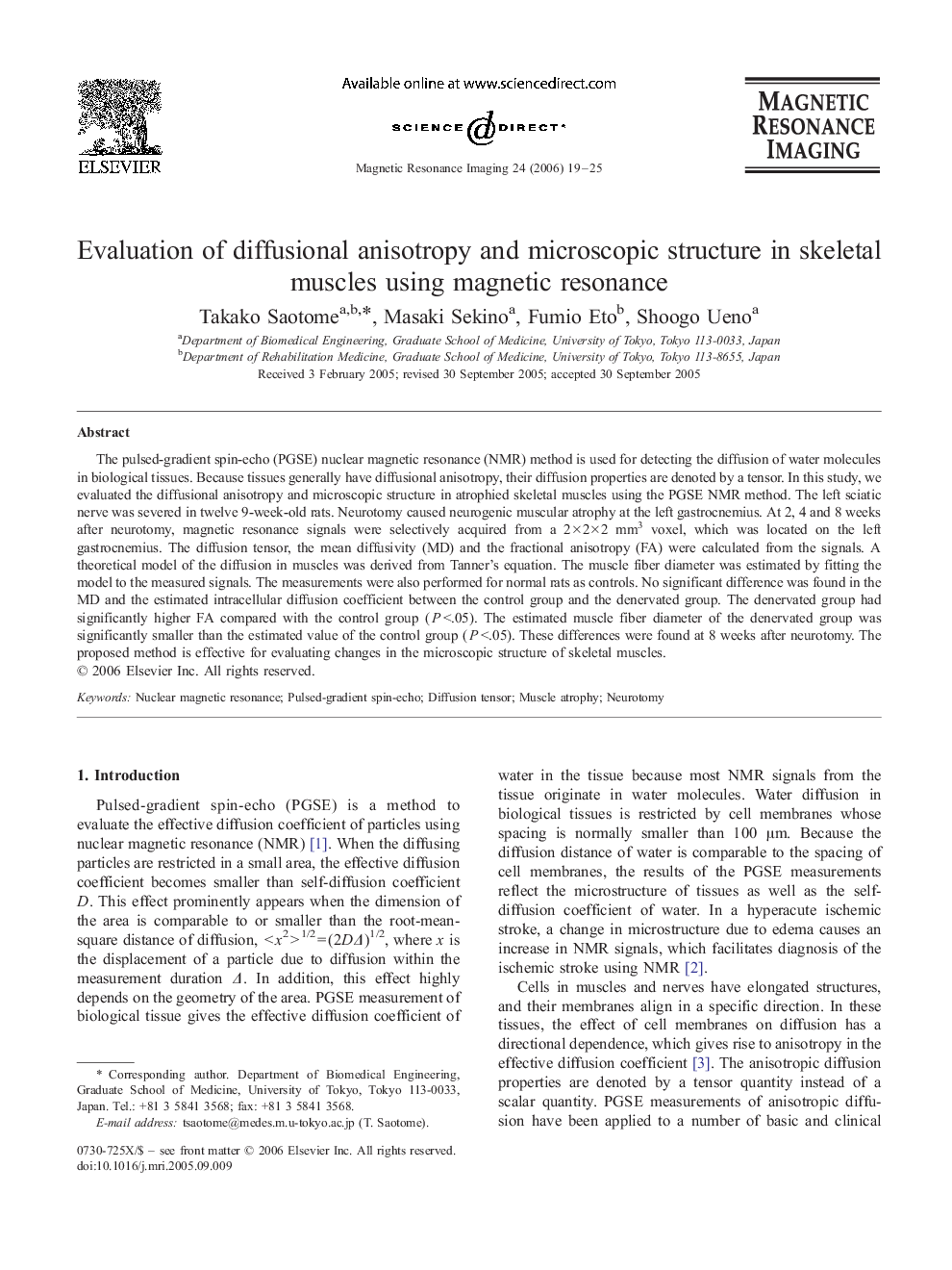| Article ID | Journal | Published Year | Pages | File Type |
|---|---|---|---|---|
| 1808053 | Magnetic Resonance Imaging | 2006 | 7 Pages |
The pulsed-gradient spin-echo (PGSE) nuclear magnetic resonance (NMR) method is used for detecting the diffusion of water molecules in biological tissues. Because tissues generally have diffusional anisotropy, their diffusion properties are denoted by a tensor. In this study, we evaluated the diffusional anisotropy and microscopic structure in atrophied skeletal muscles using the PGSE NMR method. The left sciatic nerve was severed in twelve 9-week-old rats. Neurotomy caused neurogenic muscular atrophy at the left gastrocnemius. At 2, 4 and 8 weeks after neurotomy, magnetic resonance signals were selectively acquired from a 2×2×2 mm3 voxel, which was located on the left gastrocnemius. The diffusion tensor, the mean diffusivity (MD) and the fractional anisotropy (FA) were calculated from the signals. A theoretical model of the diffusion in muscles was derived from Tanner's equation. The muscle fiber diameter was estimated by fitting the model to the measured signals. The measurements were also performed for normal rats as controls. No significant difference was found in the MD and the estimated intracellular diffusion coefficient between the control group and the denervated group. The denervated group had significantly higher FA compared with the control group (P<.05). The estimated muscle fiber diameter of the denervated group was significantly smaller than the estimated value of the control group (P<.05). These differences were found at 8 weeks after neurotomy. The proposed method is effective for evaluating changes in the microscopic structure of skeletal muscles.
